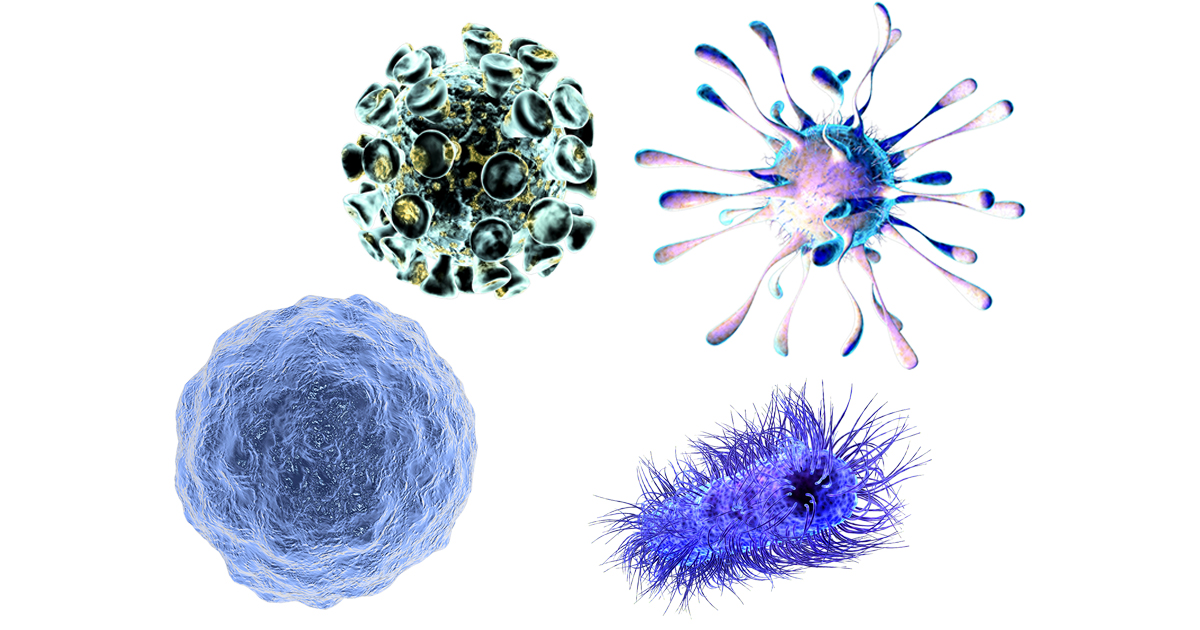Veterinary hospital-acquired infections are a matter of fact, with an incidence of 4% to 9% (Mielke, 2010), compared to a human level of 5% to 10% (Burke, 2003).
Hospitals are occupied by sick patients. Nosocomial infection outbreaks (hospital-acquired), with differing aetiologies, have been well documented, with a significant percentage found to be zoonotic infections (Milton et al, 2015).
These infections are contracted in a hospital environment, arising between 48 hours following admission, up until 30 days following discharge.
Common nosocomial infections in the veterinary hospital include urinary tract infections, surgical wound infections and infectious diarrhoea. Historically, efforts focused on the control of infectious diseases such as canine parvovirus.
More recently, it is the control of infectious zoonotic diseases – such as meticillin-resistant Staphylococcus aureus, Clostridium difficile, and meticillin-resistant Staphylococcus pseudintermedius – that have taken precedent. It is accepted such infections are endemic within veterinary hospitals. The longer a patient is hospitalised, the more invasive the procedure (for example, IV or urinary catheters), the greater the risk.
Sorry tale
Many practices, even some corporates, state infection control is really important to them. However, in the author’s opinion, words and action (or lack of it in the vast majority of practices) tell a very sorry tale, which reflects poorly on our profession.
True, the RCVS Practice Standards Scheme (PSS) “encourages” practices to make a commitment to infection control, gaining points towards higher accolades in a range of PSS areas, by making a commitment to infection control. Practices being assessed gain points if employees enrol on, and undertake, infection control training courses. A number of these are now available – some run by commercial organisations, others by veterinary professional bodies (for example, the BVNA).
The author would advocate that a key member of staff should enrol on a structured, externally validated infection control and hospital biosecurity CPD course – for example, http://bit.ly/2WM1Nu0
Delegates on some such courses create objective critiques of their own workplace, recognising areas of risk and weakness, and creating potential solutions to address the issues. This assists in formulating infection control and biosecurity policies for their workplace and provides the knowledge for delegates to also explain how their plan will be put into practice. However, in reading delegates’ coursework, one is given an intriguing insight into many practice environments.
Firstly, the delegates achieve a tremendous benefit from such courses; they develop a real understanding of the challenges within their own working environment, then create solutions. In some cases, practice owners, vets and nurses are all highly committed to improving their standards, while in others it is readily apparent that the owners have no interest in improving the infection control status, predominantly because they simply don’t see it as a problem.
Surveillance
Morley (2005) made it abundantly clear that unless outcome surveillance was conducted, improvements were unlikely to be significant.
Morley stated: “Surveillance for nosocomial infection and disease is a critical component in an integrated and highly effective infection control programme.

Surveillance activities provide a sensory role to guide ongoing control practices so they are focused and efficient. Without input from surveillance results, infection control practices are likely to be guided more by emotion and opinion than by data and evidence.”
Morley goes further to state: “Current knowledge and experience about nosocomial infection in veterinary medicine might be considered to be 30 years behind knowledge about infection control in human health settings.”
An essential step in your infection control journey is to locate those areas or objects in your facility where infection or contamination is lurking, but this has been ignored as no one knew it was a problem.
In the author’s experience, testing for adenosine triphosphate – a nucleoside triphosphate used in cells as a coenzyme – has been shown to be absolutely invaluable in identifying where problems were present in a veterinary facility. It is also vital to show the proof to staff members, as this means effective solutions are more likely to be adapted and accepted by all staff members.
Troubleshooting
In our own facility, the surfaces anyone would expect to be contaminated (reception and consulting room floors and tables) were very clean; in contrast, the reception desk, owner reception seating, consulting room door handles, stethoscopes, nail clippers, phones and keyboards were an issue.
In other areas of the hospital, difficult-to-clean items were identified, such as the controls on ultrasound equipment, knobs on anaesthetic oxygen flow meters and surgical patient restraint devices.
Perhaps most surprisingly, the dirtiest areas in the hospital were non-clinical desks, phones and, in particular, the staff room. The most consistently dirty item was the hot water tap on the drinks dispenser. Simply, these areas are not ordinarily disinfected. The hot water tap is handled many times a day, often by staff who have not yet sanitised their hands. Retraining staff, and the judicious location of additional hand sanitisers (preferably hands free – that is, infra-red-controlled), has resolved these issues.
BRP regulations
In the UK, unlike most of the other EU states, disinfectants have never been regulated other than those approved for notifiable diseases by Defra (which have little relevance to the average veterinary practice).
The extent to which the European Chemical Agency/HSE-driven Biological Products Regulations will have meaningful impact remains to be seen. It will undoubtedly change the landscape in terms of the number of veterinary disinfectant suppliers, each facing an expense investment of around €250,000 (£223,774) per product – which, when considering the size of the veterinary sector, may make it viable for only the multinationals. There can be little doubt that prices will rise.
New threats

Looking ahead to new antimicrobial threats, we already know of plasmid transfer of antimicrobial resistance (AMR) from one unrelated species of bacteria to another.
Many such transferred cases of AMR relate to classes of antibiotics ordinarily reserved for human patients affected by multiresistance bacteria, which demonstrate, for example, colistin resistance. Colistin resistance has been demonstrated in Europe in humans, food-producing species (for instance, pork poultry and beef) as well as in pets.
Despite the battle with AMR, which one would expect to focus practice principles minds on infection control, in the author’s opinion, far too many practices are still behaving like ostriches, pretending veterinary nosocomial infections are unimportant.
Many members of the public will be aware of unannounced infection control inspections conducted on doctors and dentists practices, hospitals – even kebab, and fish and chip shops – and yet, when discussed with any pet owner, universally there is surprise and dismay there is no compulsory practice standard inspections for veterinary practices. Even those who sign up voluntarily typically enjoy a two to three-month notice period.
Surely the role of the RCVS is to protect the public and its animals. Does this not include the control of nosocomial infections in UK veterinary facilities?
Infection control is not a one off the week prior to an inspection – on the contrary, it must be regular and ongoing, nor can it be reliant on any one key staff member. It must be embraced by all members of the clinical team.
Biosecurity and infection control policy is firmly in the hands of the practice owners, as it always has been, and it is where the real initiative for improvement must take place.

Leave a Reply